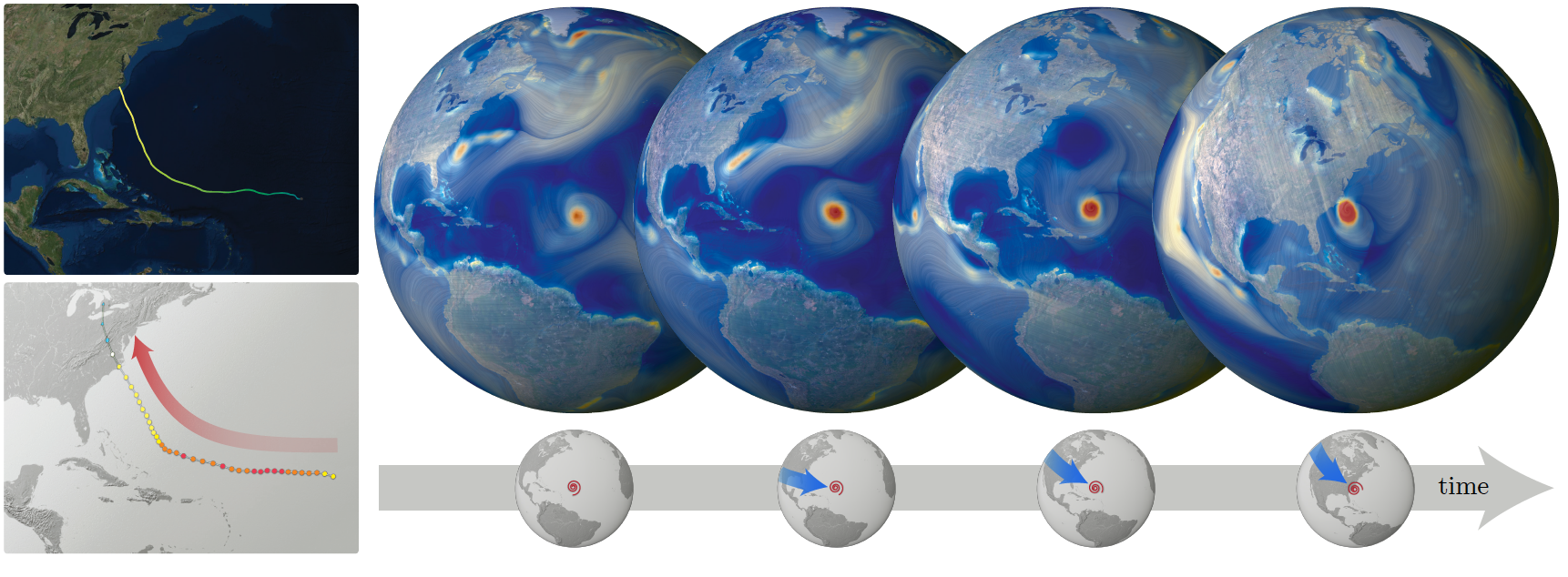
Objective Observer-Relative Flow Visualization in Curved Spaces for Unsteady 2D Geophysical Flows
IEEE Transactions on Visualization and Computer Graphics (Proceedings IEEE Scientific Visualization 2020), 2021.
Computing and visualizing features in fluid flow often depends on the observer, or reference frame, relative to which the input velocity field is given. A desired property of feature detectors is therefore that they are objective, meaning independent of the input reference frame. However, the standard definition of objectivity is only given for Euclidean domains and cannot be applied in curved spaces. We build on methods from mathematical physics and Riemannian geometry to generalize objectivity to curved spaces, using the powerful notion of symmetry groups as the basis for definition. From this, we develop a general mathematical framework for the objective computation of observer fields for curved spaces, relative to which other computed measures become objective. An important property of our framework is that it works intrinsically in 2D, instead of in the 3D ambient space. This enables a direct generalization of the 2D computation via optimization of observer fields in flat space to curved domains, without having to perform optimization in 3D. We specifically develop the case of unsteady 2D geophysical flows given on spheres, such as the Earth. Our observer fields in curved spaces then enable objective feature computation as well as the visualization of the time evolution of scalar and vector fields, such that the automatically computed reference frames follow moving structures like vortices in a way that makes them appear to be steady.